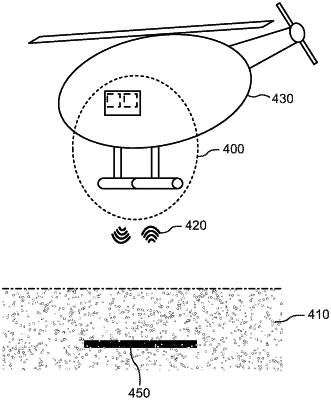| CPC G01S 13/885 (2013.01) [G01S 13/90 (2013.01); G01S 13/9011 (2013.01); G01S 13/9019 (2019.05); G01S 13/9076 (2019.05)] | 12 Claims |

|
1. A feature detection based method performed in a radar system for synthetic aperture radar, SAR, vertical imaging for detecting a horizontally buried linear object, the horizontally buried linear object having a longitudinal extension, while the radar system moves on a flying platform along a trajectory corresponding to a synthetic aperture, the method comprising:
transmitting and receiving radar signals while moving along the trajectory corresponding to the synthetic aperture, wherein transmitting and receiving radar signals further comprises focusing the transmitted radar signal based on a received nadir radar signal reflection, wherein focusing the transmitted radar signal comprises:
determining a flight height of the flying platform based on the received nadir radar signal reflection, and
determining a refractive index of the ground based on a signal strength of the received nadir radar signal reflection,
wherein focusing the transmitted radar signal is based on the determined flight height and the determined refractive index,
forming a SAR image based on collected data representing radar signal reflections received from ground; and
detecting one or more features in the formed SAR image relating to the horizontally buried linear object,
wherein said trajectory being oriented in a direction substantially perpendicular to an expected orientation of the longitudinal extension of the horizontally buried object and traversing the horizontally buried object.
|